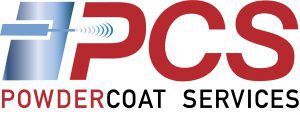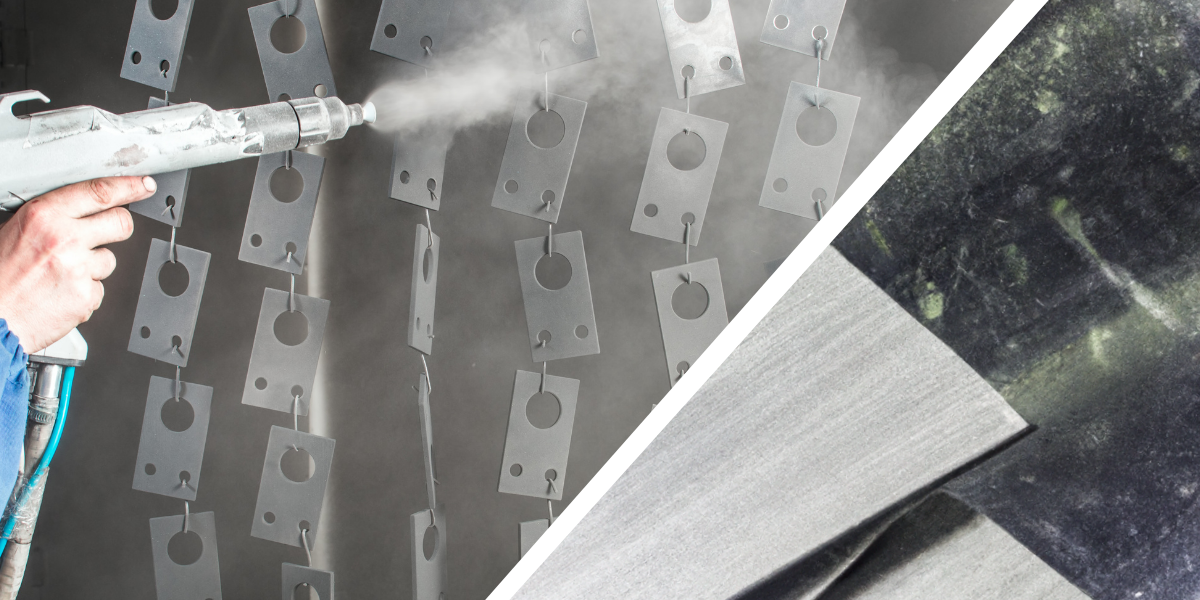Powder coating vs anodizing: which is the best solution for your project?
In various industries, from architecture to construction, aluminum is a valuable material used for producing a range of products and components. The right aluminum alloy can offer an exceptional combination of flexibility and durability. However, extending the lifespan and longevity of any aluminum part requires the right finishing strategy.
Powder coating and anodization represent two popular solutions for enhancing the strength, aesthetic appeal, and functional characteristics of aluminum. The question is, which solution will offer the best results, corrosion resistance, and versatility for your project? We created this step-by-step comparison guide, to help you make the right choice.
What is Powder Coating?
Powder coating is a popular dry finishing process, used on a wide range of machined parts and metals, from aluminum to stainless steel. Powder coat finishes differ from traditional finishing solutions, offering companies a significant level of versatility.
Experts in powder coating apply an electrostatically charged dry powder to an aluminum extrusion or metal surface, using specialist equipment. The powder is composed of a range of different particles, featuring different types of pigments, resins, and additives, depending on the final result that needs to be achieved. The overall composition of the powder affects the properties of the finish.
Once the powder is applied to a surface, the piece is cured in an oven. The heat causes the powder to melt and adhere to the surface, resulting in a smooth and consistent finish. Powder coated aluminum can be designed to adapt to a range of color options, finishes, and textures, making it a versatile choice for a huge range of industrial applications.
The Benefits of Powder Coating
Powder coating is considered a superior finishing techniques for many metal surfaces, due to its versatility, durability, and resistance to environmental stressors, such as corrosion and chipping. Compared to other finishes and liquid coating options, powder coating offers:
- Superior durability: The right polyester or epoxy powder coating can produce a tough and resilient coating for various metals, resistant to chipping, scratching, corrosion and fading.
- Sustainability: Powder coating is an environmentally friendly finishing option, producing little to no volatile organic compounds (VOCs).
- Flexibility: Polyester and PVDF coating options are available in a range of colors, textures, and effects, allowing for comprehensive design customization.
- Strength: Companies can choose the ideal level of powder coating thickness for their specific needs, without worrying about running or sagging.
- Coverage: Powder coating can be evenly applied to a wide range of products and components. It’s ideal for complex shapes that would be difficult to cover with paint.
Drawbacks of Powder Coating
Though powder coating is a popular solution for many metals and components, it does have some potential drawbacks. The right polyester powder or finish needs to be created on a bespoke basis, according to the needs of your projects, which demands a high level of expertise. Specialized equipment and training is also necessary for an effective application process.
Compared to other finishing methods, powder coating can sometimes be more expensive to access initially, though it can save you money in terms of long-term maintenance. Notably, without expertise, it can be difficult to touch up or repair a damaged powder coat finish.
Additionally, there are some forms of substrate that may not be suitable for powder coating, which is why it’s crucial to consider your project requirements carefully.
What is Anodizing/Anodized Coating?
Anodization, or anodizing, is an electrochemical finishing process commonly used with aluminum and similar products. An anodized finish helps to enhance the natural oxide layer on the surface of an aluminum product, transforming it into a layer that demonstrates excellent corrosion resistance.
Applying an anodized coating to aluminum requires specialists to submerge the product in an electrolyte, such as sulfuric acid, then passing an electric current through the surface, which thickens the aluminum oxide layer on the surface.
There are various types of anodizing processes. While the use of sulfuric acid is the most common, hard aluminum anodizing can be a popular alternative, as it can produce a thicker oxide layer, making it valuable to industrial applications where products are exposed to harsh conditions.
The Benefits of an Anodized Coating
The oxide layer created through the anodized coating process provides exceptional protection against damage, wear, fading, and chipping. Anodized aluminum can benefit from exceptional resistance to abrasion, ensuring the surface can withstand heavy use and exposure to a range of elements. Other benefits of anodizing can include:
- Exceptional durability: Unlike liquid coating options, anodized coatings don’t peel or chip, offering lasting protection for critical aluminum components.
- Enhanced corrosion resistance: The anodization process enhances the corrosion resistance of materials in harsh environments, and produces a fade-resistant finish.
- Flexibility: Though anodization doesn’t offer as many finishing options as powder coating, it is possible to dye or color the aluminum to adjust the aesthetic appeal.
- Aesthetic appeal: An anodized coating allows companies to maintain the natural metallic appearance of aluminum, allowing for a modern and sophisticated look.
Drawbacks of Anodized Coating
Similar to powder coating, aluminum anodizing does have some limitations. For instance, companies may struggle to achieve the exact aesthetic they’re looking for, as the color, texture, and effect options available with this process are limited.
Additionally, while anodized aluminum is more durable than aluminum on its own, the finish isn’t as thick, durable, or impact resistant as the result you’d get from a powder coating. Your products and components could be more susceptible to scratching, marring and dents.
Additionally, achieving a consistent and high-quality finish with anodization requires a significant level of expertise and careful handling from a trained professional. It’s easy to end up with problems like staining, and uneven coloring.
Comparing Powder Coating vs Anodizing
When it comes to the question of powder coating vs anodizing for aluminum finishes, there’s no one-size-fits-all solution. The right finish for you will depend on the specific goals you have for your project, as well as your budget, and aesthetic requirements.
| Factor | Powder Coating | Anodizing |
| Durability | Powder coat finishes are highly resistant to fading, chipping, and various forms of damage. It’s also possible to apply thicker layers of powder coats for a higher level of durability. | While Anodized aluminum is more durable, and resistant to corrosion, it’s less impact resistant. Anodization offers excellent abrasion resistance, but doesn’t provide a thick layer of protection. |
| Appearance | Powder coating gives you complete control over the appearance of your product. You can choose form a wide range of colors, textures, and effects depending on your needs. | Anodization retains the natural metallic look of aluminum, which can be a positive for some companies. However, there are fewer finishes or color options to choose from. |
| Cost | Powder coating can be slightly more expensive than anodization, depending on the type of dry powder you need, and the expertise required. | The initial costs of applying an anodized coating may be lower. However, the cost can vary depending on your aluminum anodizing strategy. |
| Environmental impact | For sustainable companies, powder coating is more environmentally friendly, producing minimal VOCs. Leftover PVDF or polyester powder can also be collected and reused. | Anodization uses important resources like water, as well as various chemicals, which can have an impact on the environment. However, green options are available. |
| Application suitability | Suitable for a wide range of metal surfaces and substrates, powder coating is fantastic in a range of industries. It’s also ideal for products with complex shapes. | Anodization is common in aluminum and aluminum alloy finishing, and offers excellent protection in harsh environments. It’s popular in the aviation sector. |
| Maintenance requirements | Easy to clean, powder coating offers a low-maintenance finish to a range of applications. Though finishes can be difficult to repair. | Anodized aluminum requires careful handling to avoid scratching or scuffing, but it can be easy to clean. |
| Applications and industries | Powder coating is common in the automotive industry, the production of appliances, outdoor furniture, and architectural products. | Anodization is common in the aerospace and aviation industries, as well as in the development of kitchenware and some architectural components. |
Which One Should You Choose?
Powder coating vs anodizing: which option should you choose for your aluminum project? Overall, your choice of surface finish will depend on your unique goals and requirements. Anodizing is excellent for maintaining an attractive metallic look, and accessing higher levels of wear and corrosion resistance. However, powder coating is the most versatile option overall.
With a company like PowderCoat Services, you can access the expertise and guidance you need to create the ultimate powder coat finish for any aluminum product. The right finish will boost the durability and longevity of your aluminum or metal surface, and can even enhance its aesthetic appeal. As experts in our industry, we’ve introduced countless companies to the unique benefits of powder coating.
Contact our team today if you’d like to learn more about selecting the best finish for your aluminum project, or to request a quote for your project.
Request a quote from our powder coating experts here.


